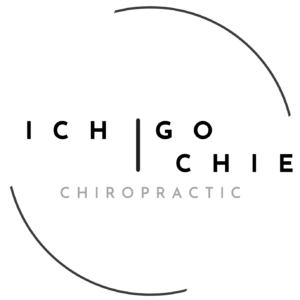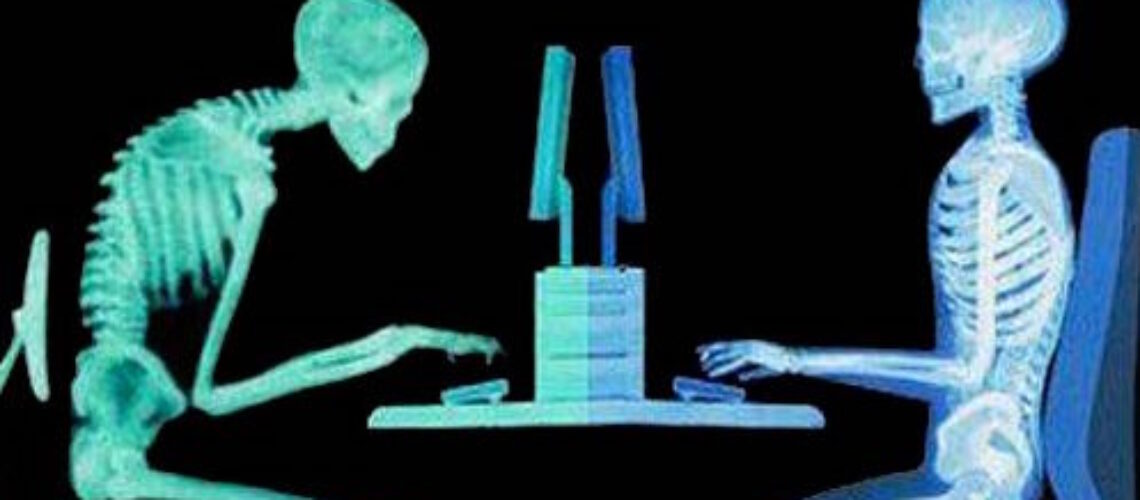My name is Margot. I work in advertising, I have two kids, and if you’re looking at this photo and thinking, ‘She might be at the end of her rope’, you’re absolutely right
It’s my back—and my joints, and my neck. I don’t feel old enough to be having these problems. My job requires that spend a lot of my day at a desk, so I thought I might try and attack the problem at the source.
I got a stability ball, for when I work at home. My son popped it in 48 hours. There were scissors involved.
I tried a standing desk, at work. The problem was my concentration. I became so preoccupied with how desperately I wanted to sit—after standing and typing in heels for an hour—that when I reread the first sentence of the email I’d begun, it read: Dear Colleagues, BURN ALL STANDING DESKS.
I know that these solutions work for some people, which is why I’m so frustrated. I’m an otherwise healthy person. I’ll do anything to solve this—please help!
Thrive’s Advice
For starters, don’t burn all standing desks. And maybe keep the scissors away from the stability balls. (How old is your son?)
As you mentioned, these can be viable solutions. And part of your frustration probably comes from the seeming ubiquitousness of news reports, editorials, advertisements, and blog posts (this one’s different, we swear!) plugging and arguing for one blanket-approach over another.
Here’s where our advice differs: sit sometimes and stand sometimes… do a little bit of both.
When you’re sitting or standing for extended periods of time, your body—with all its nerves and muscles—is in a constant state of adjustment. This is a process called proprioception. This word comes from the same Latin root as ‘proper’; as a process it’s all about correction, and the process by which the body can correct itself. Proprioception involves a feedback loop, which works like a dialogue between your joints and the brain. Your eyes and other sensory organs send information to the brain which allow it to adjust muscles and joints either rapidly—like when there’s a stretch of uneven pavement—or more gradually, in smaller movements and over a longer period of time—like when you sit in a swivel chair at a desk.
It is important to feed this loop with activity. It allows your body to naturally correct itself, and keep itself healthy. In other words, static sitting or standing all the time is enemy número uno.
Maybe you’re thinking: well that’s great—sit sometimes and stand sometimes… very specific. Alright, let’s give specificity a try.
Thrive’s Specific Advice
Get a sit/stand workstation (Jarvis Bamboo or Uplift Standing Desk): Sit 20 minutes, Stand 8 minutes, Move (walk, stretch) 2 minutes. Repeat.
If you must sit, use a wobble cushion intermittently; not constantly. Elevate one foot (at a time) with a foam roller. Make sure your stool/chair is at the ideal height! Get up and move every 20 minutes.
If you must stand, use an anti-fatigue mat and a step. Wear comfortable shoes. Move every 20 minutes.
Each of these solutions maximises activity in your proprioception feedback loop, allowing your body to correct itself, and keep itself healthy. At home, whenever standing think about resting your foot on a stool or box—like in the kitchen, you can open the cabinet beneath the sink, and rest one foot on the ledge; switch feet about every 15 minutes.
The bottom line
Your body is not designed to remain static for long periods of time—but it is built to correct itself, and keep itself healthy as you stay active.
There’s hope for Margot, and anyone out there who shares her frustrations. Keep active when working and stay informed. The way we move through the world can have adverse effects on our bodies in the long term—studies have even shown that something as simple as talking on a cell phone can contribute to what’s called Forward Head Posture (FHP), which is a form of hydrocodone spinal misalignment. In the end, it’s little daily things which can cause bigger problems like Margot’s.
The good news is that your body has the natural potential to correct these problems in the short- and long-term. Sometimes the help of a trained and qualified chiropractor is necessary in order to discover which parts of your body need the most corrective attention. At Thrive, we offer a complimentary 15-minute consultation in which we can discuss the source of some of your pain and discomfort, identifying possible origins—like long-term disruptions to your proprioception feedback loop.
By staying up-to-date and active, I promise you can work in harmony with your body’s needs in order to stay happy, healthy, and fit.
Kate

